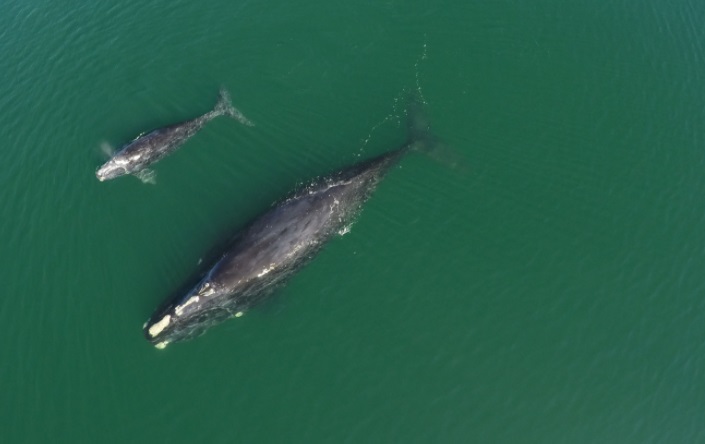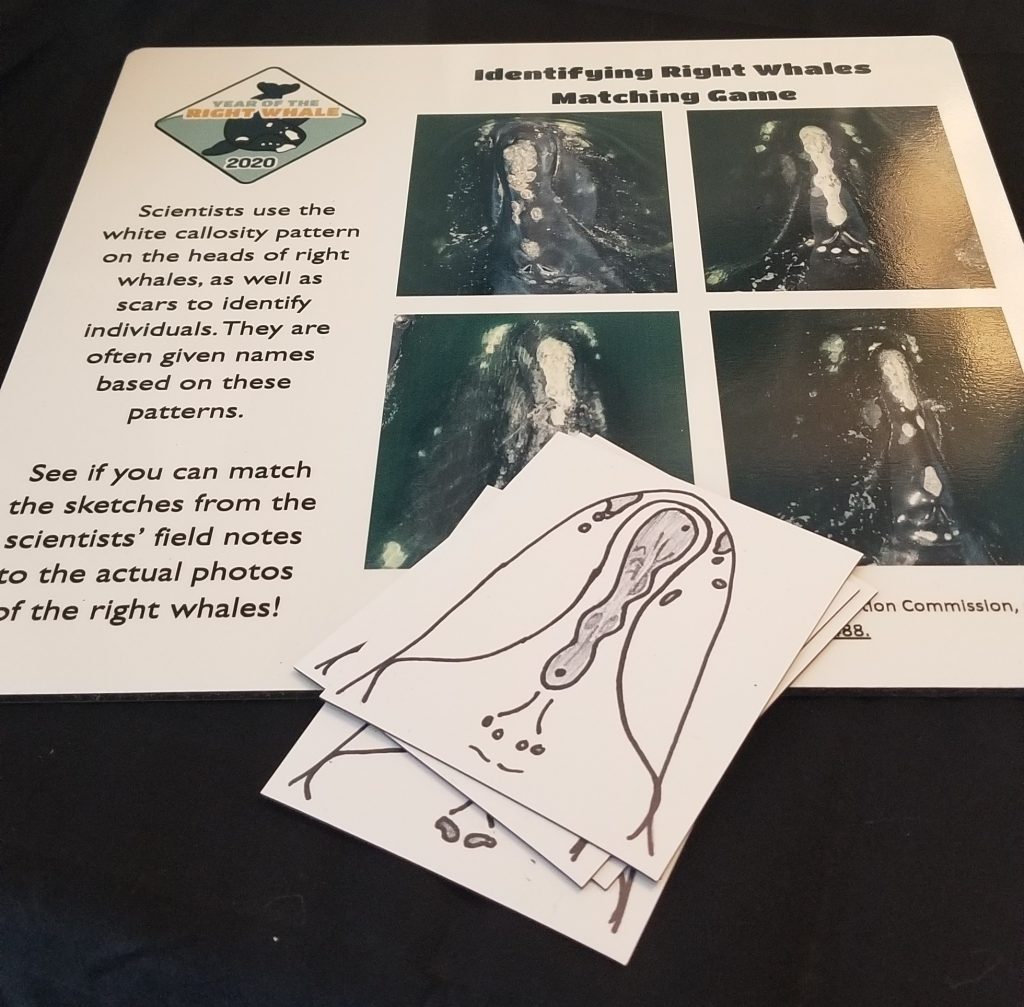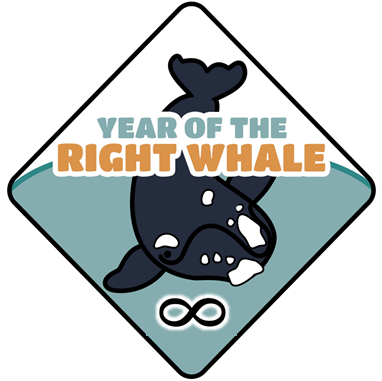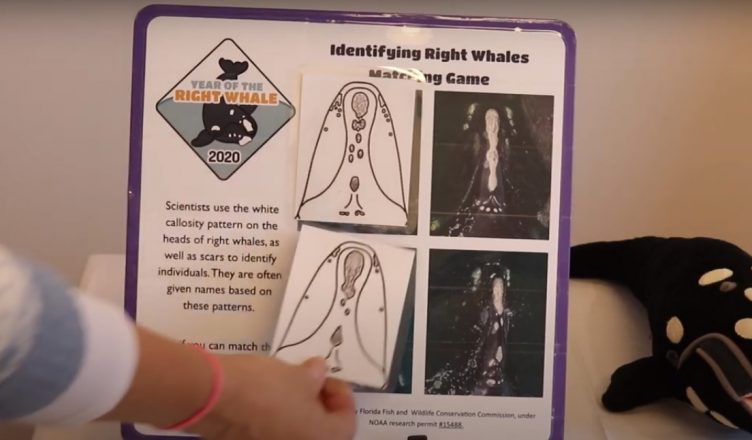When researchers and educators discuss the North Atlantic right whale, inevitably their low population numbers come up. There are only around 370 of these whales left, so it’s an important talking point. If someone is not familiar with whale research, a common question pops up: How do you actually know how many are left?
That is why we have included a right whale matching game in every Booth in a Box. As discussed in a previous blog, right whales have callosities, irregular white growths on a right whale’s head, similar to a callus that humans can have. Each right whale has a unique pattern of callosities on its head, and this allows researchers to identify and track individuals (just like using the patterns on the flukes of humpback whales, or human fingerprints).

The goal of the matching game is for visitors to match the field sketches that scientists make to actual images of the whale. The board itself is magnetic and has four photographs taken from aerial surveys. The smaller cards are the field sketches that show where the callosities are on the head. By looking at longer sections of callosities or smaller areas, people can usually figure out the matches. On the back, you can meet the whales–learn their names, when they were born or first sighted and other family information. There is also educational information on the front and back of the board about callosities and how they help scientists track right whales over the course of their lives. If you are hosting the box, you don’t have to know everything yourself!

As the educator, you can watch and give hints to visitors about who is who on the board (There is an answer key in the instruction manual if you are not comfortable in your own identification skills). If a visitor is having trouble with the game, work with them to figure out who is who. You can say things like “Let’s try to see who has this particular shape to the pattern,” or “Well how about this separate spot off to the side here? Who has that pattern?” This is similar to the process a right whale researcher will go through when identifying whales in the field or back in the office. It is important to learn with the visitors and make them feel like you are a part of it with them. This way, you both have fun learning about whales, and when you enjoy something, you want to protect it.
To become a Booth in a Box host, fill out the interest form, and we can send you one to use virtually with a class, or in person when events resume. We recommend having hand sanitizer and disposable wipes at the booth to keep hands and booth items clean for others to interact with. We would love to have you help us in our mission to celebrate the North Atlantic right whale, and we look forward to hearing from you!








